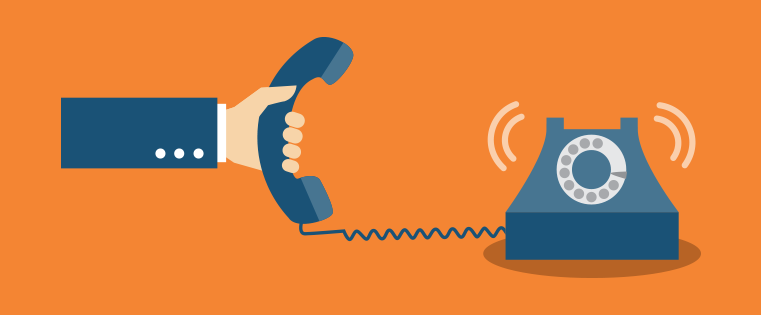Voice Over Internet Protocol (VoIP) is a set of digital technologies that allow you to make phone calls over local networks and the internet. They simultaneously work together to facilitate the movement of voice and video between callers.
You’ll learn in this document that VoIP refers to many subsets of communications tech. All at once, it’s a large set of codecs like G.711, protocols like H.323, quality of service techniques like bandwidth allotment, and metrics like the Mean Opinion Score.
Read more for Medical Malpractice Attorney Utah
The Public Switched Telephone Network
In order to understand how VoIP manages calls, it’s first necessary to learn about the Public Switched Telephone Network (PSTN) and historical methods of calling.
PSTN Has Many Moving Parts
The PSTN, like VoIP, exists as a superset that contains multiple moving parts. When you consider copper and fiber optic telephone lines, cellular networks, communications satellites, and undersea cables – and even switching centers that route calls between different types of information-carrying devices – you’re speaking about the PSTN.
What you’ll see most often of the overall PSTN network topology are the telephone poles and copper wires that line your streets. The traditional, analog method of carrying information between household telephones uses those wires to send information between one another. Whenever household residents would pick up a telephone and hear a dial tone, they were using miles of copper wire to connect to a local telephone carrier’s office, which would route calls to the proper destinations.
In discussions about this type of traditional calling, you may also hear the term Plain Old Telephone Service (POTS). It isn’t uncommon to find PSTN and POTS used interchangeably in conversation.
Still, you should know that POTS, in definition, is more closely aligned with copper wires and home phone lines. PSTN can refer to those elements in addition to the rest of the analog and digital infrastructure elements listed above.
Shown here, this simplified PSTN diagram shows where the public network and private (VoIP) networks meet. A business’s phone plan (its own private network) attaches to the PSTN through one of many central servers its VoIP service provider hosts in the internet.
Circuit Switching
Circuit switching is the method used to connect traditional phone calls that move through a copper medium, like the wires that line your neighborhood’s streets. When one caller dialed at least one other person, they established a circuit that would remain active until the call ended. This connection was required before individuals could speak to one another.
Although connecting two individuals in this manner over long distances – perhaps over thousands of miles – is a somewhat weighty endeavor, it guaranteed that the full bandwidth of the connection was dedicated to those users for the full length of the call. It provided callers with high reliability and call quality.
The Public Switched Telephone Network gets its name from the fact that it is the sum of all communications infrastructure that uses circuit switching to manage calls between users.
Protocols and Regulations
There are a number of protocols a telephone network can use when routing calls, including the E.164 standard the International Telecommunication Union created to define the 15-digit international phone numbers we all recognize. The international phone numbering plan, defined in this high-level protocol, could be applied to calls made from your business desk phone, home phone, or a cell phone.
Other protocols, such as the signaling protocols H.323 and Session Initiation Protocol (SIP), which are discussed at length later in this article, are more specific in their applications. They were created for use within Voice Over IP (VoIP) systems, which are not strictly part of the PSTN. However, they do govern digital voice traffic that ultimately makes use of PSTN components.
For instance, you may see an internet-based service provider use SIP to connect a business’s on-site phone server to the internet. The service provider could route its client’s digital calls through copper infrastructure to a second business that’s still connected to the PSTN through a traditional analog service. In this case, you would see outgoing calls utilize the E.164 protocol and SIP simultaneously.
E.164 means to reach across national borders and unify calling across the globe; it has seen widespread adoption toward that goal. In contrast, individual phone service vendors often take the option of using H.323, SIP, or some other type of signaling protocol, which can lead to inconsistency in the market and interoperability issues between VoIP clients.
This isn’t the place to discuss all the regulations that govern public communications systems.Still, you should be aware that specific protocols exist and take different liberties as part of digital calling systems like VoIP networks and global networks like the PSTN.
Packet Switched Networks
VoIP does not use circuit switching. Instead, it relies on packet switching to transmit information from one caller to another.
The most fundamental answer to the question “What is VoIP service?” is that it’s a packet-switched communications network.
Networks that send packets do not create continuous connections between two or more nodes. They transmit small pieces of information, called packets, from the sender to the receiver. Those packets can take different paths (as demonstrated in this animation) and arrive at the receiver at different times, but they ultimately get put back together in the correct order.
The multiple parts of packets include different sets of information, including headers that state a packet’s origination and destination and the payload that, for VoIP networks, will include the voice data from a conversation. The packet switched network example displayed in the diagram here shows the four parts to a VoIP packet: IP header, UDP header, RTP header, and RTP payload.
The internet uses packets to send and retrieve information. Therefore, since VoIP is joined fundamentally to the internet, it must also use packets and will be subject to mechanics of that type of network.
VoIP’s link to packet switching provides it with a number of advantages and disadvantages. Let’s first look at the advantages. We’ll address disadvantages in the next section so you can see what companies like VirtualPBX must take into consideration when delivering high-quality voice service.
How Packet Switching Helps VoIP
Many organizations use VoIP calling to make it easier to route phones between departments. Instead of using complicated and expensive private branch exchanges (PBXs) on their sites, businesses can adopt a virtual PBX that uses VoIP techniques to connect phones across a local network.
The use of packet-based systems is also efficient. Whereas circuit switched networks create a connection that persists throughout downtimes – like when you’re not speaking – packet switched networks only send information when required.
Packet switching can also make long distance calling easier because, again, it doesn’t require a steady connection between two end points. It doesn’t need to tie New York and California with thousands of miles of copper wiring for the duration of a call. Therefore, the caller doesn’t need to “own” those lines for that period; the caller only needs to request use of copper, fiber, satellites, and data routers when data needs to be sent.
Challenges to VoIP Service Providers
In contrast to circuit switching, the packet switching method of transferring voice data can be relatively unreliable when it’s not managed properly. Such unreliability can lead to poor call quality.
Service providers want to offer their clients clear, consistent audio. Therefore they must address jitter, packet loss, and latency if they want to provide a high-quality service — especially in situations where clients will switch from an on-site PBX to VoIP.
Jitter
Jitter is a primary offender when it comes to voice quality. Although the word jitter makes it sound like this culprit is the cause of shaky or choppy audio, that isn’t always the case.
VoIP jitter in audio calls may actually be heard as a wave-like motion that distorts the playback speed of a sound.
This occurs when individual packets are not sent and received in the same time frame.
Example: If a sentence you spoke to a colleague during a VoIP conversation used three packets – A, B, C – that were sent at intervals of 1 ms, you would need to have them reach your colleague as A, B, and C in that order with 1 ms between them in order to have the sentence make sense.
If A and B arrived as expected and were transmitted to the colleague, but C was several-hundred milliseconds late, your colleague may hear a distortion in the final part of your sentence.
What causes jitter can include slow data connections, a lack of available network bandwidth, and spikes in bandwidth usage from other applications and websites — all of which can increase the time it takes for one device to respond to another.
Response time is measured in milliseconds and is referred to as a ping. High jitter and adverse effects on voice calls typically begin around 30 ms. An average ping time between two VoIP callers might be 5 – 10 ms, but a deviation from the mean can make that value much higher.







